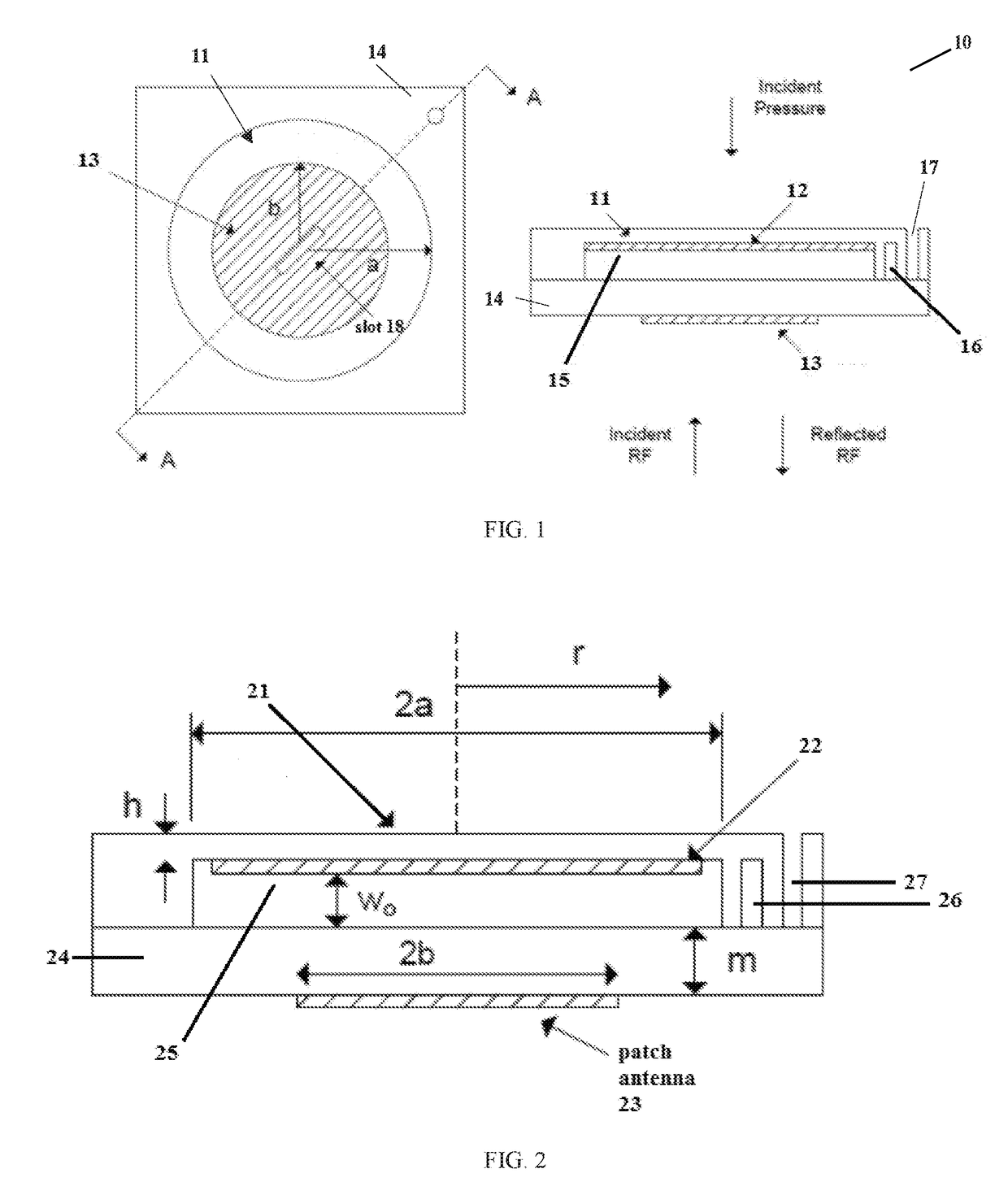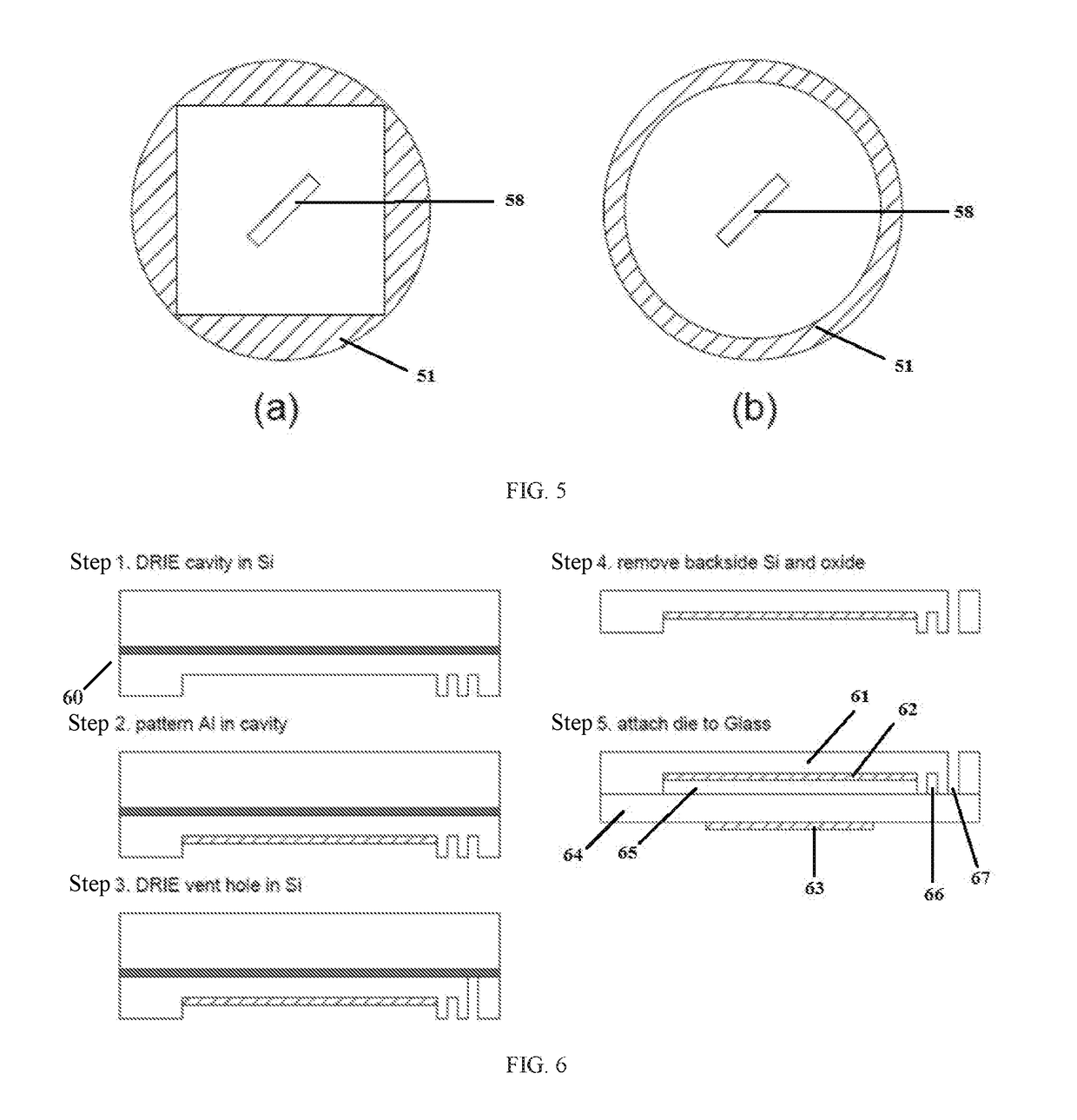Passive wireless pressure sensor for harsh environments
- Summary
- Abstract
- Description
- Claims
- Application Information
AI Technical Summary
Benefits of technology
Problems solved by technology
Method used
Image
Examples
example 1
[0116]In FIG. 1, the antenna radius b can be between 2 and 4 mm such that the antenna is large enough to resonate in the X-band, but small enough to allow 1 mm between the diaphragm and the edge of a 10 mm×10 mm die. The diaphragm thickness h is preferably between 15 and 50 μm to support a nominal air gap depth or a cavity depth of up to 35 μm. The diaphragm thickness for the sapphire-based high temperature pressure sensor was fixed at 50 μm as a commercially available part. The electrical operating frequency f was bounded between 13 and 16 GHz such that the antenna operated within its dynamic range, around 15 GHz.
example 2
[0117]Optimization of the diaphragm was performed using commercially available software. The demonstration sensor was designed such that two diaphragm sizes (e.g., 7.6 mm and 6.4 mm) satisfy corresponding pressure requirements (e.g., 3 kPa and 6 kPa) for a pre-determined maximum displacement of 13.5 μm. The optimized design parameters for the demonstration sensor are given in Table I.
TABLE ISummary of optimization results for demonstration sensor.ParameterVariablePmax = 3 kPaPmax = 6 kPaDiaphragm Diameter2a7.6mm6.4mmDiaphragm Thicknessh35μm35μmCavity Depthwa15μm15μmMaximum Displacementwpk,nl13.5μm13.5μmAntenna Diameter2b5.8mm5.8mmNom. Operating Frequencyfo14.9GHz14.9GHz
example 3
[0118]FIGS. 14 through 19 show data (in graphical form) from simulations that were conducted assuming the use of a 5.7 mm circular patch antenna. This information can be used to optimize sensors of the embodiments of the present invention for particular applications.
[0119]FIG. 14 shows the predicted (or simulated) resonant frequency of a pressure sensor as a function of the average air gap (nominal or deflected) depth. It can be seen that there is a linear relationship between the resonant frequency and the average air gap depth, which makes it easier to extract the sensed pressure since the pressure is linearly related to the gap depth, as shown in equation (2).
[0120]FIG. 15 shows the predicted (or simulated) RCS and quality factor (Q factor) as a function of the slot width. The slot width can be selected to obtain the highest RCS (for better sensing) and the highest Q factor (for better sensitivity). The electrical sensitivity of the pressure sensor, as shown in equation (16), is ...
PUM
 Login to View More
Login to View More Abstract
Description
Claims
Application Information
 Login to View More
Login to View More - R&D
- Intellectual Property
- Life Sciences
- Materials
- Tech Scout
- Unparalleled Data Quality
- Higher Quality Content
- 60% Fewer Hallucinations
Browse by: Latest US Patents, China's latest patents, Technical Efficacy Thesaurus, Application Domain, Technology Topic, Popular Technical Reports.
© 2025 PatSnap. All rights reserved.Legal|Privacy policy|Modern Slavery Act Transparency Statement|Sitemap|About US| Contact US: help@patsnap.com



